The Future of Gaming NFTs and Their Market Potential
The world of gaming is on the cusp of a revolution, and at the heart of this transformation lies Non-Fungible Tokens (NFTs). These digital assets are not just buzzwords; they are reshaping how we think about ownership, creativity, and value in the gaming landscape. Imagine a world where your in-game items, characters, and skins are truly yours—permanently etched into the blockchain, allowing you to trade, sell, or showcase them as you please. This is the exciting future that gaming NFTs promise, and it’s not just a fleeting trend; it’s a seismic shift that could redefine the industry.
As we dive deeper into this topic, we’ll explore the implications of NFTs for both developers and players. For developers, NFTs present new revenue streams and innovative ways to engage audiences. For players, they offer a sense of ownership and investment that traditional gaming has often overlooked. But what does this all mean for the market potential of gaming NFTs? Spoiler alert: it’s huge! With the gaming industry already valued in the hundreds of billions, the integration of NFTs could lead to unprecedented opportunities for growth and engagement.
Let’s not forget the community aspect of gaming. NFTs can foster a sense of belonging and engagement among players. Think about it: when you own a unique digital asset, you’re not just a player; you’re part of an exclusive club. This community-driven approach can enhance loyalty and bring players together in ways that traditional gaming models simply cannot. So, whether you’re a casual gamer or a hardcore enthusiast, the rise of gaming NFTs is something you should definitely keep an eye on.
In the following sections, we’ll break down the mechanics of NFTs, the role of blockchain technology, and the market trends that are shaping this new frontier. We’ll also address the challenges that lie ahead, including regulatory concerns and market volatility. But rest assured, the potential for growth and innovation is immense, and understanding these elements will help you navigate the exciting world of gaming NFTs.
- What are gaming NFTs? Gaming NFTs are unique digital assets that represent ownership of in-game items, characters, or skins, secured on a blockchain.
- How do NFTs benefit players? NFTs provide players with true ownership of their assets, allowing them to trade or sell items freely.
- Are there risks associated with gaming NFTs? Yes, there are risks such as market volatility and regulatory challenges that players and developers should consider.
- What is the future of gaming NFTs? The future looks promising, with potential for significant growth and innovation in the gaming industry as more developers adopt NFT technology.
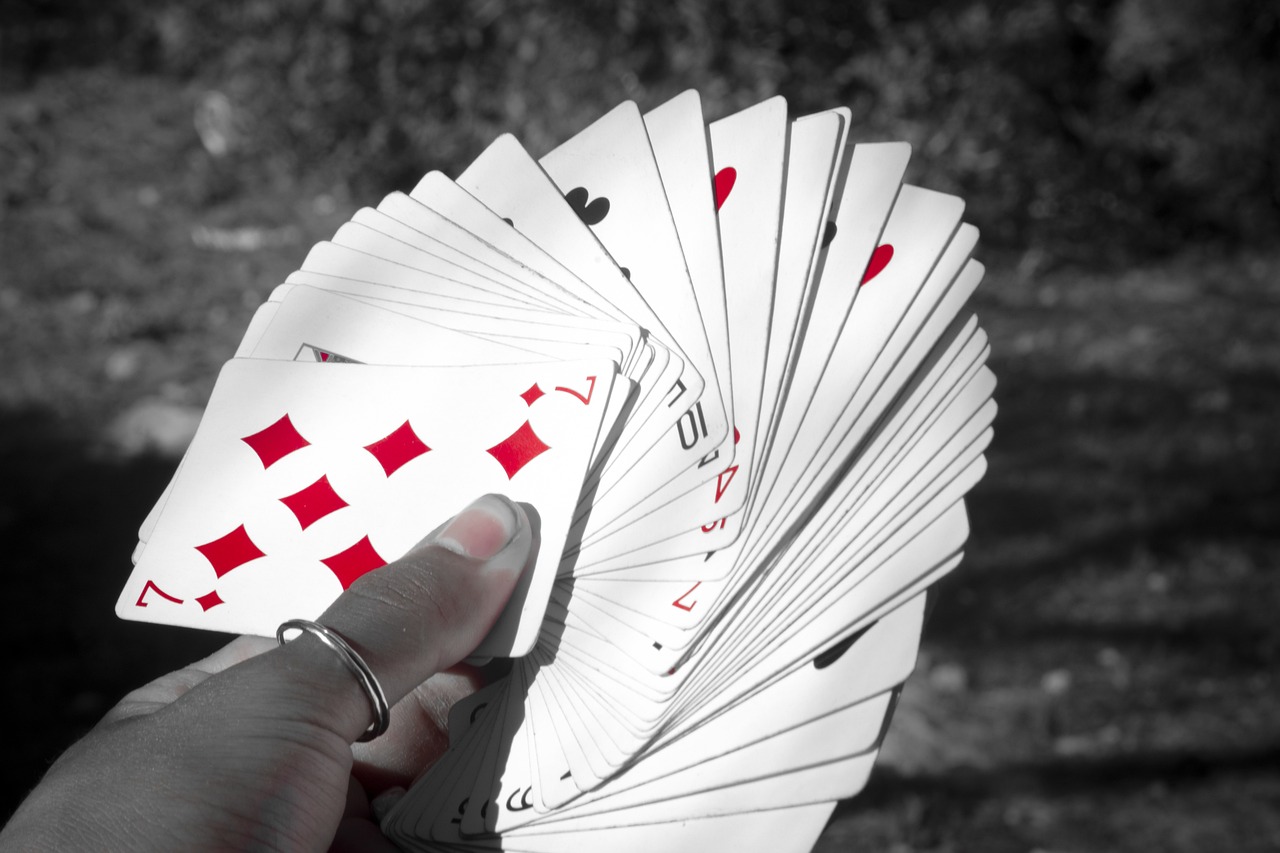
The Rise of NFTs in Gaming
In recent years, the gaming industry has witnessed a revolutionary shift with the introduction of NFTs, or Non-Fungible Tokens. These digital assets have not only transformed the concept of ownership in gaming but have also opened up a plethora of new revenue streams for developers. Imagine a world where players can truly own their in-game items—where a rare sword or an exclusive skin isn't just a temporary possession but a valuable asset that can be traded, sold, or even inherited. This is the promise that NFTs bring to the gaming table.
Traditionally, players have invested countless hours and money into games, only to find that their hard-earned achievements vanish when a game server shuts down or a studio decides to discontinue support. NFTs challenge this paradigm by leveraging blockchain technology to provide players with verifiable ownership of their digital assets. This means that every item, character, or piece of land can be uniquely identified and tracked, giving players a sense of permanence and value that was previously unattainable.
Moreover, NFTs enable developers to create dynamic in-game economies that can thrive beyond the confines of a single game. For instance, a player could earn an NFT in one game that carries value in another, creating a seamless transition between different gaming experiences. This cross-game functionality not only enhances player engagement but also fosters a sense of community as players trade, sell, and showcase their digital collections.
As the concept of NFTs gains traction, we are seeing an increasing number of game developers integrating these assets into their titles. From major franchises to indie projects, the allure of NFTs is hard to resist. Consider the following trends:
- Games like Axie Infinity and CryptoKitties have paved the way, allowing players to breed, trade, and battle creatures that exist as NFTs.
- Major gaming companies are beginning to explore NFT integration, with announcements from giants like Ubisoft and EA signaling a shift in industry standards.
- New marketplaces dedicated to gaming NFTs are emerging, providing players with platforms to buy, sell, and trade their digital assets.
This surge in interest has also led to the emergence of dedicated communities focused on NFT gaming. Players are not just consumers; they are becoming investors, collectors, and even creators. As the lines blur between gaming and investing, we find ourselves on the brink of a new era in the gaming industry. With this shift comes a wave of excitement, but also a set of challenges that developers must navigate to ensure the sustainability of this new model.
As we delve deeper into the mechanics of NFTs in gaming, it becomes clear that this is just the beginning. The rise of NFTs is more than just a trend; it represents a fundamental change in how we perceive ownership and value in digital spaces. With the potential for enhanced player engagement and innovative economic models, NFTs are set to reshape the gaming landscape for years to come.
- What are NFTs? NFTs, or Non-Fungible Tokens, are unique digital assets that represent ownership of a specific item or piece of content on the blockchain.
- How do NFTs benefit gamers? NFTs provide players with true ownership of their in-game items, allowing them to trade or sell these assets outside the game.
- Are NFTs safe? While NFTs offer many benefits, they also come with risks like market volatility and potential scams, so players should do their research.
- Can NFTs be used across different games? Yes, some NFTs can be designed to function in multiple games, creating a more interconnected gaming experience.

Understanding NFT Mechanics
To truly grasp the impact of NFTs on the gaming world, one must first delve into the intricate mechanics that underpin them. NFTs, or Non-Fungible Tokens, are unique digital assets verified using blockchain technology, which means they cannot be replicated or exchanged on a one-to-one basis like traditional currencies or commodities. Imagine owning a one-of-a-kind trading card; that’s what NFTs offer in the digital realm. Each NFT represents ownership of a specific item or piece of content, and this ownership is recorded on a blockchain, ensuring transparency and security.
At the heart of NFTs is blockchain technology, a decentralized digital ledger that records transactions across many computers. This technology prevents any single entity from controlling the entire system, making it incredibly secure. When you purchase an NFT, you're not just buying a digital image or item; you're acquiring a unique token that proves your ownership of that asset. This ownership is permanent and can be transferred or sold, creating a new layer of value in the gaming ecosystem.
Blockchain operates like a digital chain of blocks, where each block contains a list of transactions. Once a block is filled with data, it is added to the chain in chronological order, forming an unchangeable record. This structure ensures that all transactions are transparent and verifiable. For gamers, this means that when they buy or sell an NFT, that transaction is recorded on the blockchain, and anyone can verify it. This transparency fosters trust among players and developers alike, which is vital in an industry often plagued by issues of fraud and counterfeit items.
Another crucial aspect of NFTs is the use of smart contracts. These are self-executing contracts with the terms of the agreement directly written into code. In the context of gaming, smart contracts can automate various processes, such as transferring ownership when an NFT is sold or ensuring that developers receive a percentage of resale profits. This automation reduces the need for intermediaries, making transactions faster and more secure.
Decentralization is a game-changer for players. Traditionally, in-game assets are owned by the game developers, and players have no real ownership of their purchases. However, with NFTs, players can truly own their in-game items. This shift not only enhances player engagement but also creates a vibrant secondary market where players can buy, sell, or trade their assets. Imagine being able to sell your rare sword from a fantasy game for real money; that’s the power of NFTs!
In summary, understanding the mechanics of NFTs is essential for anyone looking to navigate the evolving landscape of gaming. By leveraging blockchain technology, smart contracts, and decentralization, NFTs are reshaping the way we think about ownership and value in the gaming industry.
- What are NFTs? NFTs are unique digital assets that represent ownership of a specific item or piece of content, verified using blockchain technology.
- How do NFTs work in gaming? NFTs allow players to own, buy, sell, and trade in-game assets securely and transparently.
- What is a smart contract? A smart contract is a self-executing contract with the terms directly written into code, automating transactions and agreements.
- Why is blockchain important for NFTs? Blockchain provides security, transparency, and decentralization, ensuring that ownership of NFTs is verifiable and tamper-proof.

Blockchain Technology Explained
When we talk about blockchain technology, we’re diving into the foundation that makes NFTs possible in the gaming world. Imagine a giant digital ledger that records every transaction and ownership transfer. This ledger is not stored in one single location; instead, it exists across a network of computers worldwide. This decentralized nature is what gives blockchain its transparency and security. Each time a player buys or sells an NFT, that transaction is added to the blockchain, creating an immutable record that anyone can verify. This means that no one can cheat the system or alter ownership details without it being obvious.
At its core, blockchain operates through a series of blocks, each containing a list of transactions. When a block is filled, it’s added to the chain in a linear, chronological order. This structure not only enhances security but also ensures that the history of ownership is preserved forever. In gaming, this translates to players having a verified proof of ownership for their digital assets, which can be anything from unique skins to entire characters. So, when you purchase an NFT in a game, you’re not just buying a virtual item; you’re acquiring a verified piece of digital property.
Now, let’s break down some key components of blockchain technology that are particularly relevant to gaming:
- Decentralization: Unlike traditional databases controlled by a single entity, blockchain is distributed across multiple nodes, making it resistant to censorship and fraud.
- Transparency: All transactions are publicly accessible, allowing players to verify ownership and transaction history without needing trust in a third party.
- Security: Cryptographic techniques ensure that once a transaction is recorded, it cannot be altered or deleted, providing a high level of security for players' assets.
But how does this all come together in the gaming NFT ecosystem? Well, think of it as a digital marketplace where every item has a unique identifier stored on the blockchain. This uniqueness is what gives NFTs their value, as each one is distinct and cannot be replicated. Furthermore, blockchain technology allows for interoperability, meaning that NFTs can potentially be used across different games and platforms, enhancing their appeal and utility.
In summary, blockchain technology is revolutionizing the gaming industry by providing a secure, transparent, and decentralized framework for digital asset ownership. As we continue to explore the potential of gaming NFTs, understanding this technology is crucial for both players and developers. It’s the backbone that supports everything from ownership to trading, ensuring that the gaming experience is fair, engaging, and full of opportunities for innovation.
- What is blockchain technology? Blockchain is a decentralized digital ledger that records transactions across many computers, ensuring that the data cannot be altered retroactively.
- How do NFTs work in gaming? NFTs represent unique digital assets in games, allowing players to buy, sell, and trade items securely on a blockchain.
- Why is blockchain important for NFTs? Blockchain provides the security, transparency, and decentralization needed to verify ownership and authenticity of NFTs.

Smart Contracts and Their Role
Smart contracts are revolutionizing the way transactions are conducted in the gaming NFT space. Think of them as digital vending machines: you insert your money, choose your item, and the machine delivers it automatically without needing a cashier. Similarly, smart contracts automate the processes involved in buying, selling, and trading NFTs, ensuring that everything runs smoothly and securely. These self-executing contracts are written in code and stored on the blockchain, which means they are tamper-proof and transparent. This level of security is crucial in a digital landscape where trust is paramount.
One of the most compelling aspects of smart contracts is their ability to enforce agreements without the need for intermediaries. For instance, when a player purchases an in-game asset, a smart contract will automatically transfer ownership of the NFT from the seller to the buyer once payment is made. This not only speeds up transactions but also reduces the risk of fraud. Imagine trying to buy a rare collectible card: you’d want assurance that the card is authentic and that the transaction is legitimate. Smart contracts provide that peace of mind by verifying every step of the process.
Moreover, smart contracts can also facilitate complex transactions, such as those involving royalties. Developers can program these contracts to ensure that they receive a percentage of sales every time their NFT is resold. This creates a sustainable revenue stream and encourages developers to create high-quality content that resonates with players. In essence, smart contracts empower creators while enhancing the overall gaming experience.
However, while the benefits are clear, it’s essential to understand that smart contracts are not without their challenges. Coding errors can lead to vulnerabilities, and once a contract is deployed on the blockchain, it cannot be altered. This makes rigorous testing and validation crucial before launching any smart contract in the gaming ecosystem. Developers must be meticulous, as a single mistake could result in significant financial losses or loss of player trust.
In conclusion, smart contracts serve as a vital component of the gaming NFT landscape. They automate transactions, enhance security, and create new revenue opportunities for developers. As the gaming industry continues to evolve, the role of smart contracts will likely expand, paving the way for even more innovative applications that redefine the gaming experience.
- What are smart contracts? Smart contracts are self-executing contracts with the terms of the agreement directly written into code on the blockchain.
- How do smart contracts enhance security? They automate transactions and enforce agreements without intermediaries, reducing the risk of fraud.
- Can smart contracts be changed after deployment? No, once deployed on the blockchain, smart contracts cannot be altered, making thorough testing essential.
- What are the benefits of using smart contracts in gaming? They streamline transactions, ensure transparency, and can provide ongoing royalties for developers.
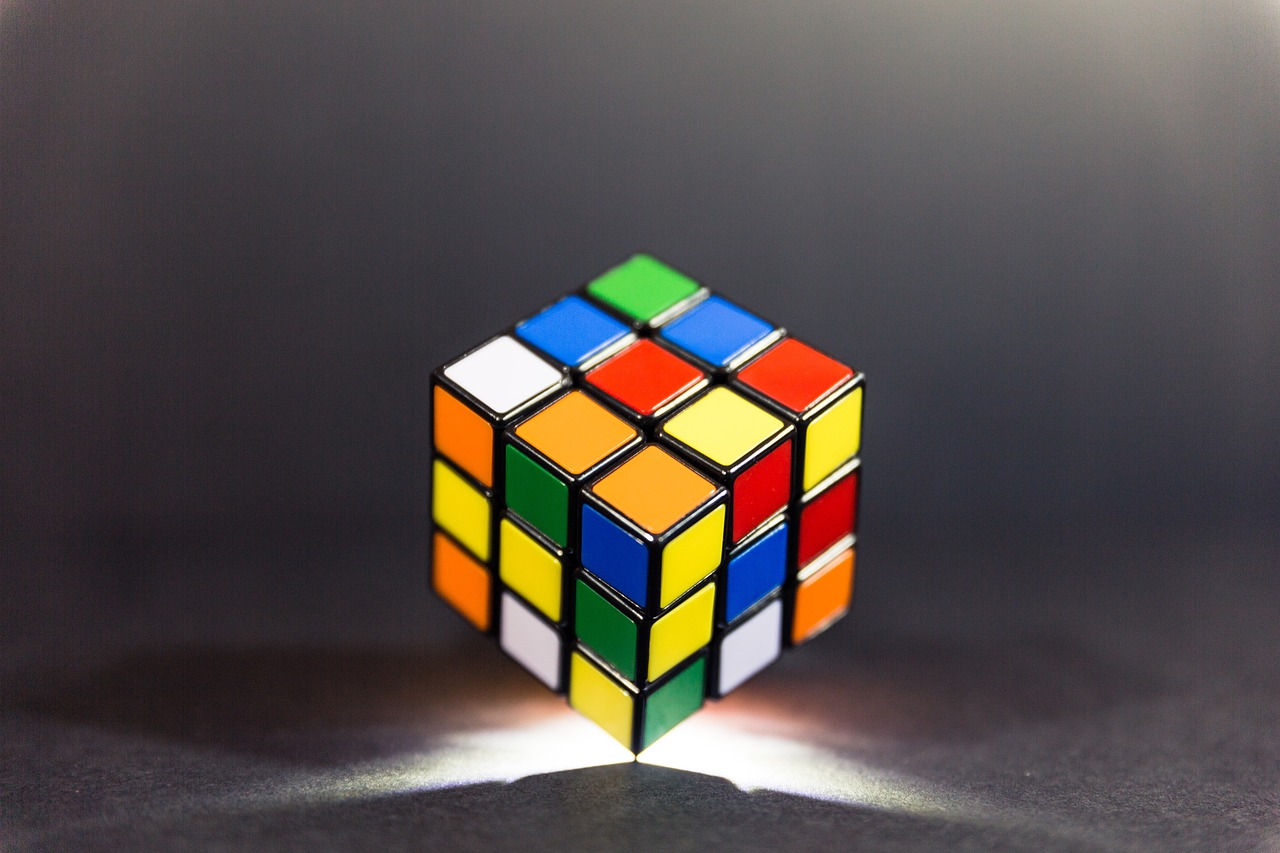
Decentralization and Ownership
In the realm of gaming, decentralization is a game-changer, fundamentally altering the way players interact with their virtual worlds. Traditionally, players have had little to no control over their in-game assets. These assets, whether they are characters, skins, or weapons, are often locked within the confines of a game’s ecosystem, owned solely by the developers. However, with the advent of NFTs (Non-Fungible Tokens), players are now empowered with true ownership of their digital assets. Imagine a world where you can buy, sell, or trade your in-game items freely, just like real-world collectibles. This shift not only enhances player engagement but also transforms the entire gaming experience into something more dynamic and player-centric.
Decentralization allows for a level of transparency that was previously unheard of in gaming. Since NFTs are built on blockchain technology, each transaction is recorded on a public ledger, ensuring that ownership is clear and indisputable. Players can verify the authenticity of their assets, knowing they own a unique piece of the digital landscape. This ownership is not just a theoretical concept; it has real-world implications. Players can monetize their skills and time spent in games, turning their passion into profit. For example, a player who has spent years building a character can sell that character as an NFT, providing them with a tangible reward for their dedication.
Furthermore, the concept of ownership in a decentralized environment extends beyond simple transactions. It fosters a sense of community and collaboration among players. With true ownership, players can participate in governance decisions regarding the future of the game. They can vote on new features, changes to gameplay, or even the distribution of revenue generated from the game. This level of involvement creates a more engaged player base, as individuals feel their voices matter in shaping the game they love.
However, it's essential to recognize that this newfound ownership comes with its own set of responsibilities. Players must be aware of the risks associated with owning digital assets, such as market volatility and the potential for loss. Just like in the real world, the value of in-game assets can fluctuate based on demand, rarity, and other market forces. Therefore, players should approach NFT ownership with a blend of enthusiasm and caution.
In conclusion, decentralization is not merely a buzzword; it represents a significant shift in how players perceive and interact with their virtual possessions. By granting players true ownership of their in-game assets, the gaming industry is entering uncharted territory, one that promises to redefine the player experience. As we continue to explore this exciting frontier, we must consider both the opportunities and challenges that come with it, ensuring that the gaming community thrives in this new decentralized landscape.
- What are NFTs in gaming? NFTs are unique digital assets verified using blockchain technology, allowing players to own, buy, and sell in-game items.
- How does decentralization benefit players? Decentralization empowers players with true ownership of their assets, enabling them to trade and monetize their in-game possessions.
- Are there risks associated with owning NFTs? Yes, the NFT market can be volatile, and players should be aware of the potential for loss in value.
- Can players influence game development through NFTs? Absolutely! With true ownership, players can participate in governance decisions and have a say in the game's future.
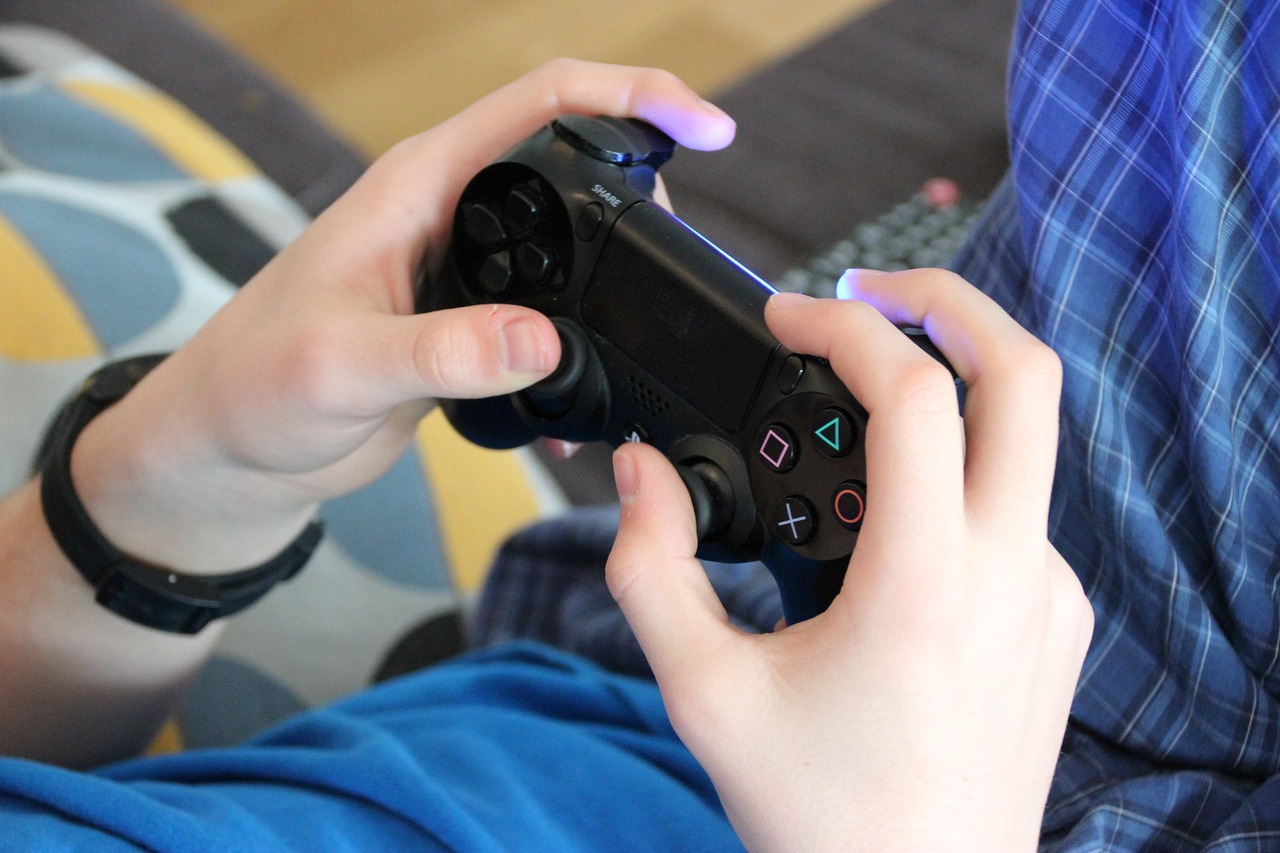
Market Trends and Growth Potential
The gaming NFT market is experiencing a remarkable surge, reflecting a broader trend towards digital ownership and community engagement. As players become more invested in their virtual assets, the demand for NFTs continues to grow, transforming how developers approach game design and monetization. This shift is not just a fleeting trend; it's a fundamental change in the gaming landscape. In fact, a recent report indicates that the NFT gaming market could reach $40 billion by 2025, showcasing its immense potential.
One of the most exciting trends within this space is the rise of play-to-earn models. These models allow players to earn real-world value through their in-game activities, creating a new economic ecosystem. Imagine spending hours in a game, not just for fun, but also to earn assets that you can sell or trade. This concept is revolutionizing the way players perceive their time spent in games, as they can now see a tangible return on their investment. The success stories of games like Axie Infinity, where players can earn significant income, are paving the way for others to follow suit.
Another trend gaining traction is the integration of NFTs with mainstream gaming platforms. Major gaming companies are beginning to explore how NFTs can enhance their offerings. For instance, Ubisoft and Electronic Arts have shown interest in incorporating NFTs into their existing franchises, aiming to provide players with unique collectibles and experiences. This integration not only attracts a new audience but also retains existing players by offering them something fresh and innovative.
Moreover, the concept of interoperability is becoming increasingly important. Players want the ability to use their NFTs across multiple games and platforms. This demand is pushing developers to create ecosystems where assets can be transferred and utilized in various gaming environments. Imagine owning a sword in one game that you can also use in another—this kind of seamless experience is what players are yearning for, and it could drastically increase the value of NFTs.
To illustrate the growth potential of the NFT gaming market, consider the following table that highlights key statistics and projections:
| Year | Market Value (in Billion $) | Growth Rate (%) |
|---|---|---|
| 2021 | 1.5 | N/A |
| 2022 | 5.0 | 233% |
| 2023 | 15.0 | 200% |
| 2024 | 25.0 | 67% |
| 2025 | 40.0 | 60% |
As we can see, the growth trajectory is not only steep but also indicative of a market that is becoming increasingly mainstream. With the backing of major players in the industry and a growing acceptance among gamers, the future looks bright for gaming NFTs.
In conclusion, the market trends and growth potential for gaming NFTs are not just promising; they are a testament to the evolving relationship between players and their digital assets. As technology continues to advance and more players embrace the concept of ownership in virtual worlds, we can expect to see even more innovative developments that will shape the future of gaming.
- What are gaming NFTs? Gaming NFTs are unique digital assets that represent ownership of in-game items, characters, or experiences, secured through blockchain technology.
- How can players benefit from gaming NFTs? Players can earn real-world value through play-to-earn models, trade their assets, and enjoy true ownership of their in-game items.
- What challenges do gaming NFTs face? Regulatory concerns and market volatility are significant challenges that developers and players must navigate.
- What is the future of gaming NFTs? The future looks promising, with potential for technological advancements, increased player engagement, and broader acceptance in mainstream gaming.

Challenges Facing Gaming NFTs
The world of gaming NFTs is not all rainbows and sunshine; it comes with its set of challenges that developers and players must navigate. As exciting as the concept of owning unique digital assets may be, several obstacles could hinder the widespread adoption and success of gaming NFTs. Let's dive into some of these challenges and explore what they mean for the future of this burgeoning market.
One of the most pressing issues facing gaming NFTs is regulatory concerns. As the NFT market grows, governments around the world are starting to take notice. They want to understand how these digital assets fit into existing legal frameworks, which can lead to uncertainty for developers and players alike. For example, questions about whether NFTs should be classified as securities or commodities can have significant implications on how they are traded and taxed. Developers must stay informed about these regulations to avoid potential pitfalls that could derail their projects.
Another significant challenge is market volatility. The NFT market is notorious for its rapid price fluctuations, which can be both exhilarating and terrifying. One day, a digital collectible might be worth thousands of dollars, and the next, it could plummet in value. This volatility affects not only player investments but also the strategies developers employ to create and market their games. It raises the question: how can developers ensure that their games remain financially viable in such an unpredictable environment? Some players may hesitate to invest in NFTs if they fear losing money, which could stifle the growth of the gaming NFT ecosystem.
Additionally, the issue of environmental impact cannot be ignored. The blockchain technology that underpins NFTs, particularly those built on proof-of-work systems, has been criticized for its high energy consumption. This has led to a growing concern among environmentally-conscious gamers and developers. As awareness of climate change increases, the gaming community is becoming more vocal about the need for sustainable practices. Developers who ignore these concerns may find themselves alienating a significant portion of their audience, potentially harming their brand and sales.
Furthermore, there is the challenge of user education. Many players are still unfamiliar with NFTs and how they work. This lack of understanding can create barriers to entry, preventing gamers from fully engaging with NFT-based games. Developers need to invest time and resources into educating their audience about the benefits and mechanics of NFTs. This could involve creating tutorials, hosting webinars, or even integrating educational content directly into their games. Without proper education, the potential of gaming NFTs could remain untapped.
Lastly, the question of interoperability arises. Currently, many NFTs are confined to their respective games or platforms, limiting players' ability to use their assets across different ecosystems. Imagine owning a rare sword in one game that you can't use in another; it feels restrictive, right? For gaming NFTs to reach their full potential, developers must work towards creating standards that allow for greater interoperability. This would not only enhance the player experience but also foster a more vibrant and interconnected gaming community.
In summary, while gaming NFTs offer exciting opportunities, they also come with a host of challenges that must be addressed. From regulatory scrutiny and market volatility to environmental concerns and user education, the road ahead is fraught with obstacles. However, with innovation and collaboration, the gaming industry can navigate these challenges and unlock the full potential of NFTs.
- What are gaming NFTs? Gaming NFTs are unique digital assets that represent ownership of in-game items, characters, or experiences, secured on a blockchain.
- Why are NFTs important in gaming? NFTs provide players with true ownership of their in-game assets, allowing for real-world value and trade.
- What challenges do gaming NFTs face? Key challenges include regulatory issues, market volatility, environmental impact, user education, and interoperability.
- How can developers address these challenges? By staying informed about regulations, creating sustainable practices, educating users, and working towards interoperability.
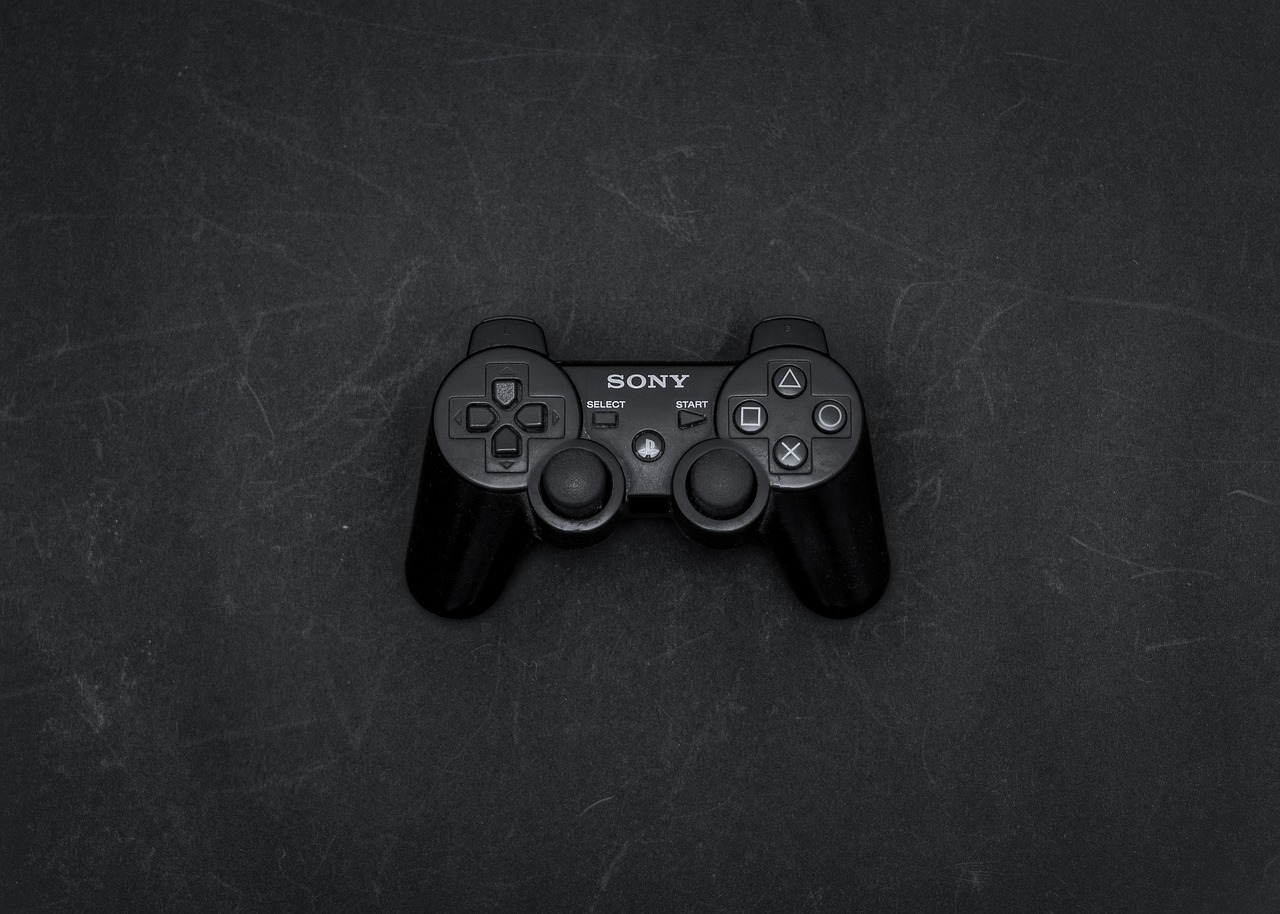
Regulatory Concerns
The world of gaming NFTs is not just about digital assets and virtual ownership; it’s also a complex landscape of regulations that are still catching up with technology. As these digital tokens gain popularity, they attract the attention of regulators worldwide, raising a multitude of concerns that developers and players must navigate. One of the primary issues is the classification of NFTs. Are they considered securities, or do they fall under the category of collectibles? This ambiguity can lead to significant legal implications for those involved in the buying, selling, and trading of NFTs.
Moreover, the decentralized nature of blockchain technology complicates matters even further. Traditional regulatory frameworks are often built on centralized models, which can clash with the ethos of decentralization that NFTs embody. For instance, regulators may struggle to enforce laws designed for centralized entities on a technology that operates on a peer-to-peer basis. This raises questions about accountability and consumer protection. Players investing in these assets deserve to know that their investments are secure and that they are not falling prey to fraudulent schemes.
Another critical regulatory concern is the potential for money laundering and other illicit activities through NFT transactions. The anonymity that blockchain offers can be a double-edged sword, making it easier for bad actors to exploit the system. To combat this, regulators may impose stringent Know Your Customer (KYC) and Anti-Money Laundering (AML) regulations on NFT platforms, which could deter participation and innovation in the space.
In light of these challenges, developers must stay informed and adaptable. Here are some key considerations:
- Compliance: Staying up-to-date with local and international regulations is crucial. Developers should consult legal experts to ensure their platforms comply with evolving laws.
- Transparency: By promoting transparency in transactions and ownership, developers can foster trust among players and regulators alike.
- Education: Educating players about the risks and regulatory landscape can empower them to make informed decisions.
In conclusion, while the potential for gaming NFTs is immense, navigating the regulatory landscape will be one of the most significant challenges for developers and players alike. Addressing these concerns proactively can pave the way for a more sustainable and secure NFT gaming ecosystem.
- What are NFTs? NFTs, or Non-Fungible Tokens, are unique digital assets verified using blockchain technology, allowing for ownership and provenance of items in the digital realm.
- Are NFTs considered securities? The classification of NFTs can vary by jurisdiction, and regulatory bodies are still determining how to categorize them.
- How can I ensure my NFT investments are secure? Always conduct thorough research, use reputable platforms, and consider diversifying your investments to mitigate risks.
- What should developers do to comply with regulations? Developers should stay informed about local laws, seek legal advice, and implement necessary compliance measures like KYC and AML.
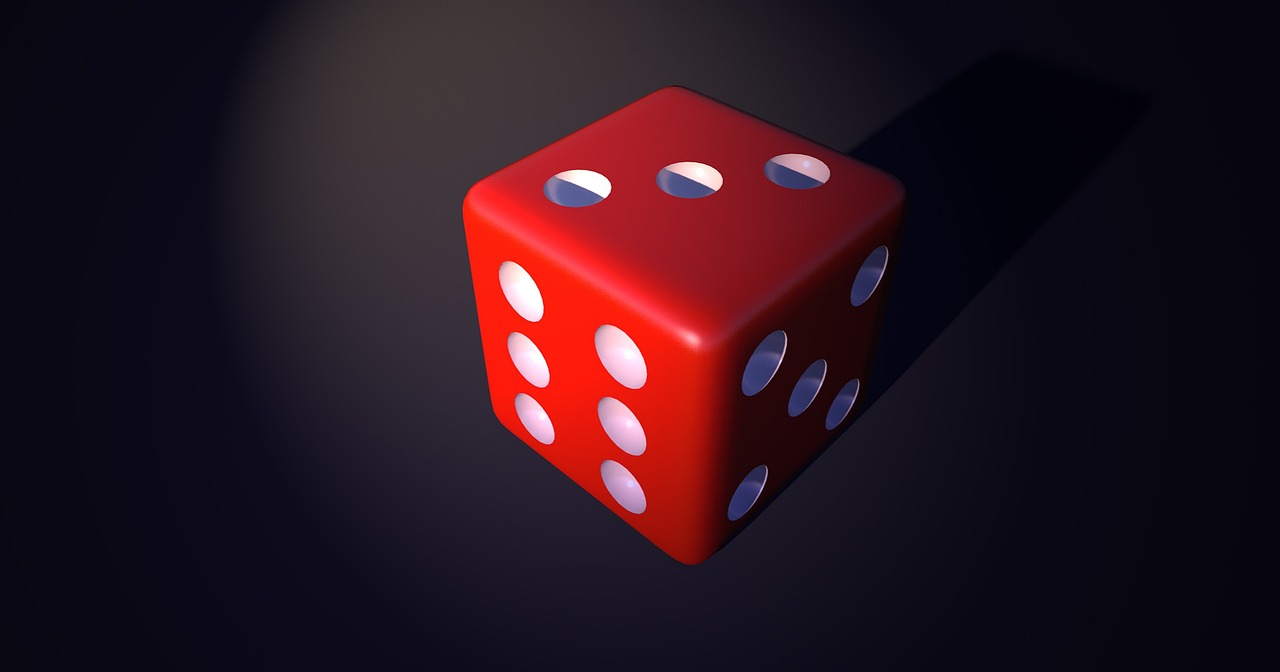
Market Volatility and Speculation
The world of gaming NFTs is not just a playground of creativity and innovation; it's also a rollercoaster ride of market volatility and speculation. As the hype around NFTs continues to grow, so does the unpredictability of their market value. One day, a digital sword in a popular game might fetch thousands of dollars, while the next day, its price could plummet. This fluctuation can be attributed to various factors, including market demand, player interest, and broader economic trends. Just like the stock market, the NFT landscape can swing dramatically, leaving players and developers alike on edge.
For players, this volatility can make investing in NFTs feel like a game of chance. While some players have struck gold by purchasing rare items at low prices, others have found themselves holding assets that have significantly depreciated in value. This uncertainty can lead to a sense of caution among potential investors. The question often arises: "Is it worth the risk?" To navigate this turbulent environment, players must stay informed about market trends and be prepared for the possibility of losing their investments.
From a developer's perspective, the speculation surrounding NFTs can be both a blessing and a curse. On one hand, the potential for high returns can attract investment and drive innovation. On the other hand, the unpredictable nature of NFT prices can complicate business models. Developers must consider how to create sustainable ecosystems where players feel secure investing their time and money. This involves not only crafting engaging gameplay but also implementing mechanisms that stabilize the market for their NFTs.
One way to mitigate the risks associated with market volatility is to educate players about the nature of NFTs and the factors influencing their value. Developers can create resources that explain the importance of rarity, utility, and community engagement in determining an NFT's price. By fostering a well-informed player base, developers can help cultivate a more stable market environment. Additionally, establishing clear guidelines for buying, selling, and trading NFTs can enhance transparency and trust within the community.
In conclusion, while the excitement of gaming NFTs presents incredible opportunities, it also brings challenges that cannot be ignored. Players and developers must work together to navigate the unpredictable waters of market volatility and speculation. By embracing education, transparency, and community engagement, the gaming NFT ecosystem can evolve into a more stable and rewarding space for everyone involved.
- What are gaming NFTs? Gaming NFTs are unique digital assets that represent ownership of in-game items, characters, or experiences, secured on a blockchain.
- Why is the NFT market so volatile? The NFT market is influenced by demand, player interest, and broader economic trends, leading to significant fluctuations in asset values.
- How can players mitigate risks in the NFT market? Players can stay informed about market trends, understand the factors affecting NFT values, and only invest what they can afford to lose.
- What role do developers play in stabilizing the NFT market? Developers can educate players, create sustainable ecosystems, and implement guidelines for buying and selling NFTs to enhance market stability.

Future Predictions for Gaming NFTs
The future of gaming NFTs is nothing short of exhilarating. As we stand on the brink of a digital revolution, the possibilities seem endless. Imagine a world where players not only engage with their favorite games but also own unique digital assets that can be traded, sold, or even used across multiple platforms. This vision is not far off, and several trends indicate that gaming NFTs are set to become a cornerstone of the gaming industry.
One of the most significant predictions is the integration of NFTs into mainstream gaming. Currently, many traditional game developers are cautious about adopting NFT technology, often due to misconceptions or fears surrounding volatility. However, as more players become educated about the benefits of NFTs—such as true ownership and the potential for real-world value—developers will likely pivot to incorporate these assets into their games. This transition could lead to a new era where players can truly own their in-game items, from skins and weapons to entire characters.
Moreover, we can expect to see a rise in cross-platform compatibility for NFTs. Picture this: you purchase a rare sword in one game, and you can use it in another game that supports the same NFT standard. This interoperability will not only enhance the gaming experience but also create a more vibrant marketplace for digital assets. Developers will need to collaborate and establish common standards, but the potential rewards are immense.
As the technology behind NFTs continues to evolve, we may witness the emergence of more sophisticated smart contracts. These contracts could automate various aspects of gameplay, such as royalties for creators every time an NFT is sold. This would ensure that original developers and artists continue to benefit from their creations, fostering a more sustainable ecosystem. The idea of rewarding creativity and innovation in gaming could lead to a renaissance of indie game development, as smaller studios can now monetize their unique ideas more effectively.
However, with great potential comes great responsibility. The gaming community will need to address the environmental concerns associated with blockchain technology. As awareness grows, developers are likely to adopt more eco-friendly solutions, such as layer-2 scaling solutions or alternative blockchains that consume less energy. This shift will not only improve the public perception of gaming NFTs but also ensure that the industry can thrive sustainably.
In terms of player engagement, we can anticipate a shift in how gamers interact with their virtual worlds. The concept of "play-to-earn" is already gaining traction, where players can earn real money by participating in games. This model could evolve further, allowing players to invest their time and skills into games that reward them not just with entertainment but also with tangible benefits. As players become more financially savvy, they will likely seek games that offer genuine earning potential, pushing developers to innovate.
Lastly, the regulatory landscape will play a crucial role in shaping the future of gaming NFTs. As governments and regulatory bodies begin to establish clearer guidelines, developers will have to navigate these waters carefully. The focus will likely shift towards ensuring consumer protection while fostering innovation. In this evolving landscape, those who adapt quickly will find themselves at the forefront of the NFT gaming revolution.
- What are gaming NFTs? Gaming NFTs are unique digital assets that players can own, trade, and use within games, enabled by blockchain technology.
- How can NFTs benefit gamers? NFTs provide players with true ownership of in-game items, allowing them to trade or sell their assets, potentially earning real money.
- Will NFTs replace traditional gaming models? While NFTs will not completely replace traditional models, they will likely coexist, offering new opportunities for developers and players.
- What are the environmental concerns related to NFTs? The energy consumption of blockchain networks can be high, raising concerns about sustainability. Developers are exploring eco-friendly alternatives to mitigate this issue.
- How can developers ensure the security of NFTs? By utilizing smart contracts and robust blockchain technology, developers can enhance the security and transparency of NFT transactions.
Frequently Asked Questions
- What are gaming NFTs?
Gaming NFTs, or Non-Fungible Tokens, are unique digital assets that represent ownership of in-game items, characters, or virtual land. Unlike traditional in-game assets, NFTs are verifiable on the blockchain, giving players true ownership and the ability to trade or sell their items.
- How do NFTs change the gaming experience?
NFTs revolutionize the gaming experience by providing players with real ownership of their in-game assets. This means players can buy, sell, or trade items outside the game environment, leading to new revenue streams and a more engaging gaming ecosystem.
- What is blockchain technology?
Blockchain technology is a decentralized digital ledger that records transactions across multiple computers. It ensures transparency and security, making it the backbone of NFTs. In gaming, blockchain allows players to verify ownership and provenance of their digital assets.
- What role do smart contracts play in gaming NFTs?
Smart contracts are self-executing contracts with the terms of the agreement directly written into code. In gaming NFTs, they automate transactions and enforce rules, enhancing security and efficiency for both players and developers.
- What challenges do gaming NFTs face?
Gaming NFTs encounter several challenges, including regulatory scrutiny, market volatility, and the potential for speculative bubbles. Developers and players need to navigate these issues to ensure a sustainable and secure gaming environment.
- How can I invest in gaming NFTs?
Investing in gaming NFTs involves purchasing unique digital assets through various marketplaces. It's essential to conduct thorough research, understand the market trends, and be aware of the risks associated with NFT speculation before making any investments.
- What does the future hold for gaming NFTs?
The future of gaming NFTs looks promising, with potential advancements in technology and shifts in player behavior. As the market matures, we can expect more innovative applications, greater adoption by mainstream gamers, and a more stable ecosystem for NFT transactions.



















